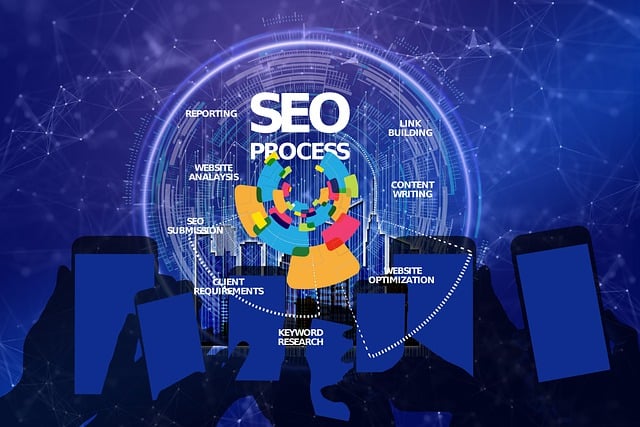In the digital marketing realm, Sustainable SEO emerges as a revolutionary approach, merging online prominence with environmental stewardship. Driven by ethical 'White-Hat SEO Techniques', it emphasizes long-term success over quick fixes, ensuring search engine rankings without harming the planet. This strategy prioritizes transparency, high-quality content, and exceptional user experiences to attract organic traffic. By integrating technical optimizations, Sustainable SEO enhances user satisfaction while promoting ecological preservation. White-Hat techniques focus on ethical practices like regular content updates, meta optimization, fast page load times, and natural growth through social media/email marketing. Adopting these methods not only improves rankings but also fosters a positive environmental impact.
In today’s digital landscape, Sustainable SEO Solutions are not just a trend but an imperative. As businesses seek to enhance their online visibility, adopting eco-friendly practices can mitigate environmental impact while driving organic growth. This article explores comprehensive strategies for successful SEO, focusing on White-Hat SEO Techniques that prioritize ethical marketing and long-term sustainability. From content creation to technical optimizations, discover key principles aimed at elevating your digital presence responsibly and effectively.
Understanding Sustainable SEO: The Green Approach to Digital Marketing

In the realm of digital marketing, Sustainable SEO stands as a revolutionary concept that marries environmental consciousness with online visibility. It’s more than just a trend; it’s an essential approach to ensure search engine optimization (SEO) practices contribute positively to our planet. By adopting what experts term ‘White-Hat SEO Techniques’, marketers can enhance website rankings without causing ecological harm. These techniques focus on ethical and long-lasting strategies, unlike quick fixes that may offer temporary gains but leave a detrimental digital footprint.
The Green Approach to Digital Marketing emphasizes transparency, quality content, and user experience as cornerstones of success. It encourages businesses to create valuable, relevant content that resonates with their audience, thereby attracting organic traffic. This method reduces the reliance on paid advertising, which can be resource-intensive and environmentally impactful. Additionally, Sustainable SEO promotes technical optimizations that improve website efficiency, making it faster and more accessible, ultimately enhancing user satisfaction.
What is White-Hat SEO? Ethical Strategies for Long-Term Success

White-Hat SEO refers to a set of ethical and sustainable techniques designed to improve search engine rankings over time, without cutting corners or engaging in manipulative practices. These strategies focus on creating high-quality content that offers genuine value to users, building reputable backlinks through natural means, and ensuring a seamless user experience across all devices. By adhering to White-Hat SEO Techniques, websites can establish themselves as authoritative sources of information, leading to increased organic traffic and improved online visibility in the long run.
Unlike Black-Hat SEO practices that aim for quick gains often at the expense of search engine algorithms and user trust, White-Hat methods prioritize long-term success. This involves regularly updating content to keep it relevant and engaging, optimizing meta tags and headings accurately, and ensuring fast page load times. Additionally, leveraging social media and email marketing in conjunction with SEO can further strengthen a website’s online presence, fostering organic growth that stands the test of time.
Key Principles of Eco-Friendly Content Creation for Better Rankings

Creating content with an eco-friendly approach is more than just a trend; it’s a powerful strategy for Sustainable SEO. At its core, this involves embracing White-Hat SEO Techniques that prioritize quality and ethical practices. Instead of cutting corners or employing black-hat methods, which can backfire and harm your rankings, focus on delivering valuable, unique content that resonates with both search engines and environmentally conscious users. Think of it as nurturing a lush digital garden where each piece of content is a carefully tended plant, thriving because of its inherent worth rather than artificial boosts.
This means reducing waste in content creation by ensuring every word contributes to the overall message and reader engagement. Utilize natural language processing to optimize text while maintaining readability, and integrate keywords seamlessly, allowing search engines to understand your topic without forcing relevance. By combining these principles with a commitment to ethical practices, you can create content that not only ranks well but also fosters a positive impact on the environment and society.
On-Page Optimization: Techniques for a Greener Website Experience

Implementing on-page optimization is a fundamental aspect of sustainable SEO, aligning your website with both user expectations and environmental sustainability principles. It involves employing White-Hat SEO Techniques that prioritize content quality, user experience, and ethical practices. One key strategy is optimizing meta tags, titles, and headings for relevant keywords while ensuring readability and relevance. This ensures search engines accurately index your content, leading to better visibility and organic traffic.
Additionally, leveraging high-quality, unique content that provides genuine value to visitors is paramount. Incorporating multimedia elements like images and videos should be balanced with efficient compression techniques to reduce page load times. These optimizations not only enhance the user experience but also contribute to a more sustainable digital footprint by minimizing energy consumption associated with faster browsing.
Off-Page Strategies: Building Organic Links with Environmental Impact

In the realm of Sustainable SEO Solutions, Off-Page Strategies play a pivotal role in fostering environmental awareness while enhancing search engine rankings. One such strategy is White-Hat SEO Techniques that focus on building organic links through eco-conscious collaborations and partnerships. By aligning with brands and influencers committed to sustainability, businesses can leverage high-quality backlinks from reputable sources, thereby improving their search visibility. This approach not only avoids the risks associated with shady link-building practices but also contributes to a positive online ecosystem.
Effective White-Hat SEO Techniques involve engaging in green content creation, such as sharing eco-friendly tips, participating in industry discussions centered around sustainability, and contributing to environmental causes. These actions attract like-minded influencers and websites, leading to natural link-building opportunities. By integrating these strategies into their marketing plans, businesses can demonstrate their commitment to the environment, making them more attractive to both search engines and environmentally conscious consumers.
Technical SEO Considerations for Sustainable Online Presence

Building a sustainable online presence requires more than just ethical business practices; it demands a robust Technical SEO strategy that aligns with your green initiatives. White-Hat SEO Techniques, which prioritize long-term success over quick wins, play a pivotal role here. These methods ensure your website is accessible, efficient, and environmentally conscious in its digital footprint. By implementing structured data markup for eco-friendly products or services, you enhance search engine understanding of your content, leading to improved visibility for your sustainable offerings.
Furthermore, optimizing site speed and mobile responsiveness are crucial. Faster loading pages reduce energy consumption, benefiting both your users and the planet. A responsive design ensures your website adapts seamlessly to various devices, promoting a seamless user experience across desktops, tablets, and smartphones. These technical optimizations not only contribute to your overall SEO strategy but also reflect your brand’s commitment to sustainability, appealing to environmentally conscious consumers.
Measuring Success: Green Metrics and KPIs for SEO Campaigns

Measuring success in Sustainable SEO goes beyond traditional metrics. It requires a shift towards Green Metrics that align with environmental and social impact goals. These metrics could include reduced carbon footprints associated with website traffic, energy efficiency improvements inspired by SEO strategies, and positive contributions to eco-friendly initiatives through content creation. By integrating these green KPIs, we ensure that our efforts are not just enhancing online visibility but also fostering a more sustainable digital landscape.
When employing White-Hat SEO Techniques, it’s crucial to track progress against these new metrics. Tools like environmental impact calculators for websites and analytics focused on user engagement with eco-conscious content can be invaluable. These innovative approaches allow us to evaluate the effectiveness of our strategies not only in terms of search rankings but also in driving change towards a greener online world.
Future of SEO: Innovations in Eco-Conscious Digital Search

The future of search engine optimization (SEO) is evolving, driven by a growing awareness of environmental sustainability and digital responsibility. As consumers become more eco-conscious, so too are search engines like Google incorporating green principles into their algorithms. This shift prioritizes websites that promote sustainable practices, ethical content creation, and efficient resource utilization. Innovations in SEO now extend beyond keyword optimization and link building to include White-Hat SEO Techniques focused on enhancing user experience, reducing bounce rates, and encouraging longer visits.
Eco-conscious digital search is not just a trend but a necessary adaptation to the changing online landscape. Search engines are leveraging advanced machine learning models to understand and reward content that aligns with ecological values. This includes promoting websites committed to energy efficiency, sustainable product sourcing, and responsible data management. By integrating these eco-friendly factors, SEO becomes a powerful tool for driving positive environmental change while ensuring businesses remain competitive in the digital marketplace.
